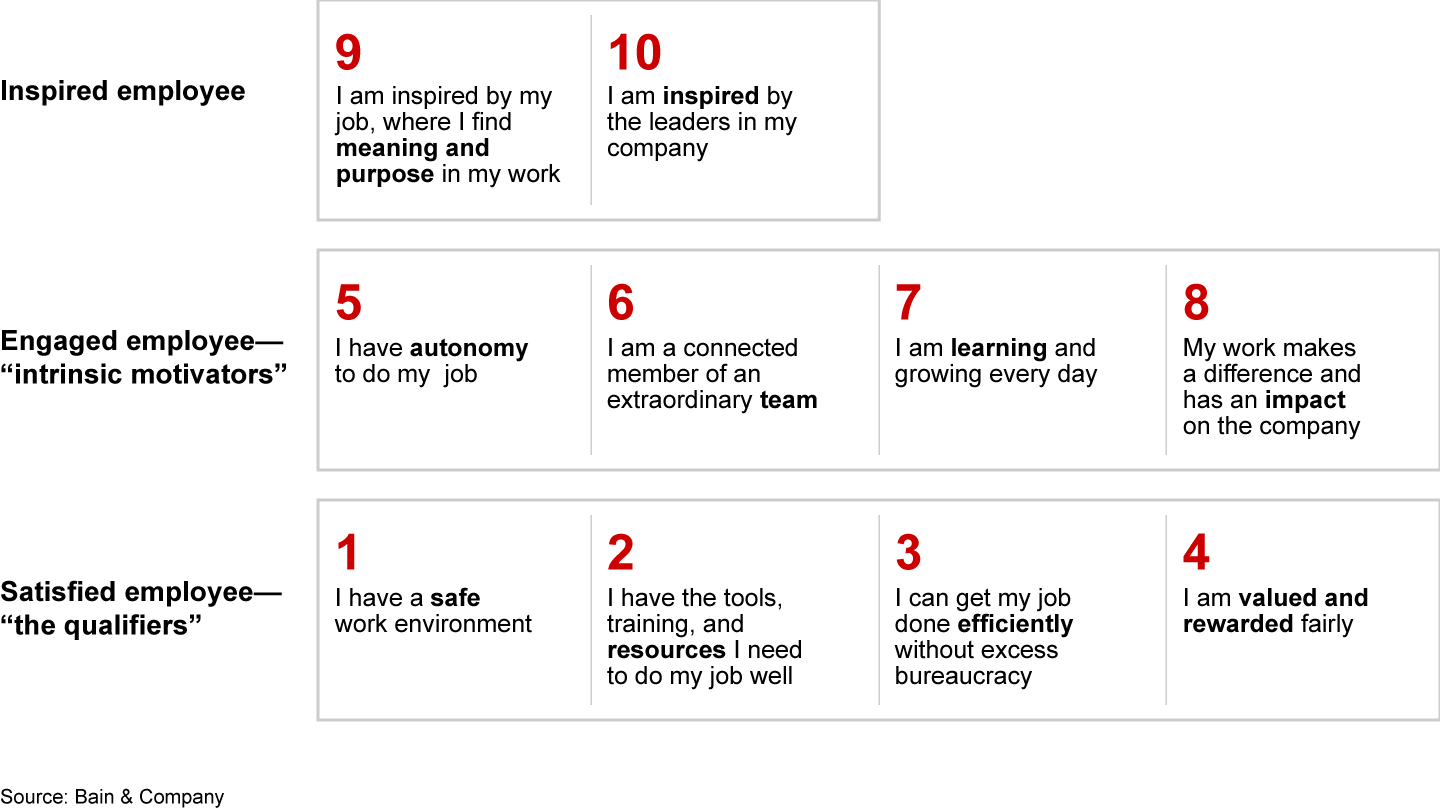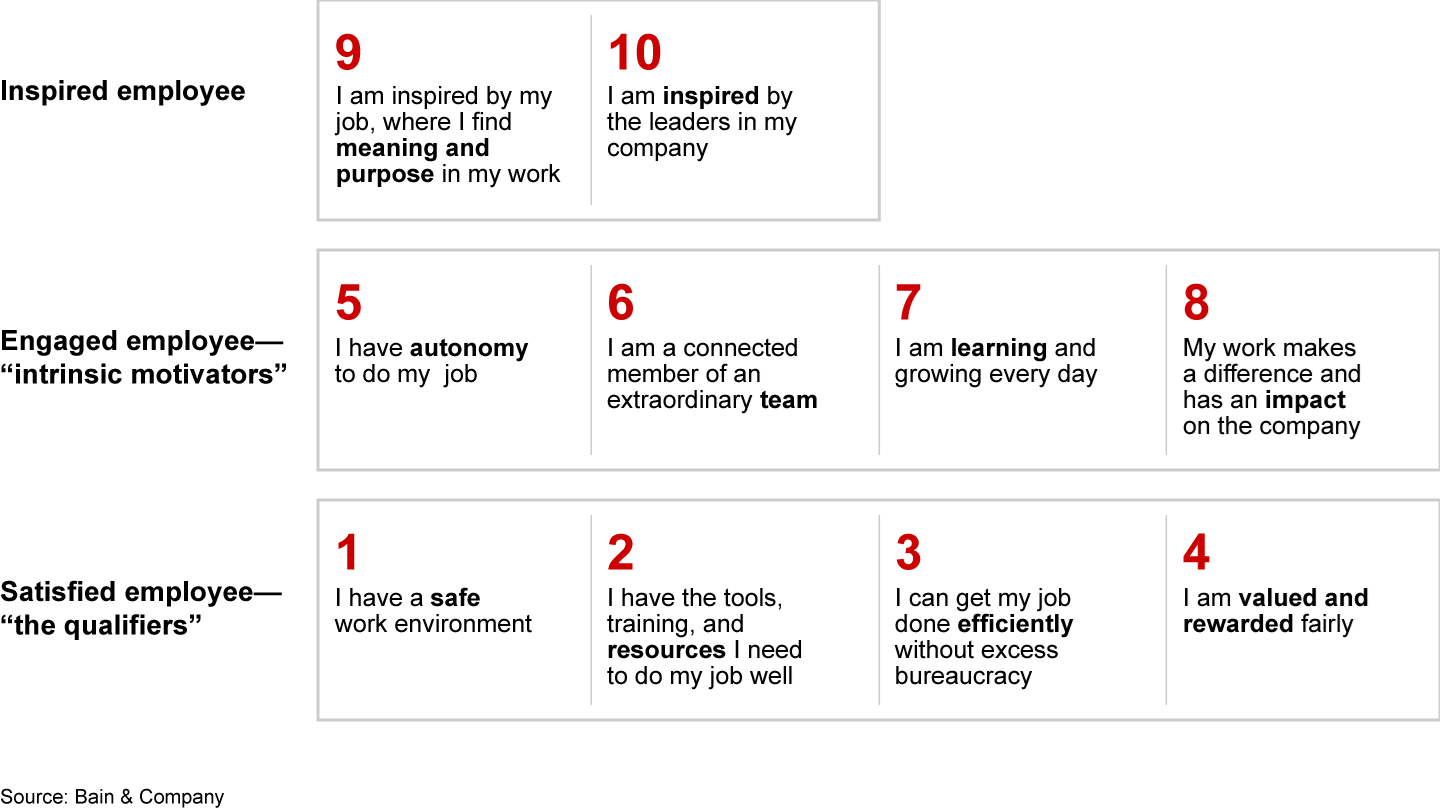Article

The post-pandemic job market has proved vexing for many employers. Starting in mid-2021, a record number of workers quit their jobs, providing evidence for what many were already calling “The Great Resignation.” Companies scrambled to retain workers and cope with critical labor shortages. In their haste to respond, however, many firms pursued strategies that employees did not value and that had little impact on employee retention. The result: Even in today’s contracting economies, quit rates have remained at historically high levels.
We’re not surprised by the poor results. Research indicates that the primary driver of today’s high attrition rates is the growing disenchantment most employees feel toward work. Increasingly, work is seen as purposeless, having little value or meaning to employees. The push for greater efficiency and standardization has left many workers jaded, bored in their jobs, disconnected from coworkers, and not particularly loyal to their employers.
The failure of most employee retention strategies stems from a fundamental misunderstanding of what motivates most of us to work—namely, engagement in the work that we do (see Figure 1). Sure, we want the basics. We want to feel safe in the workplace, have the resources we need to be productive, be rewarded fairly, and have some flexibility in where, when, and how we do our jobs. But these are merely “qualifiers.” They can make the difference between employees being satisfied or dissatisfied, but they are not enough to create high levels of engagement, loyalty, and retention.
The employee value pyramid


The failed ground and air wars for talent
In the aftermath of Covid-19, many companies are fighting “the ground war” for talent. They are boosting pay, offering greater flexibility, and modifying other “qualifiers” to retain their best people. In most cases, these tactics haven’t done much to move the needle on worker attrition. Why? These moves are undifferentiated and easily matched. Any company can change its pay structure, work-from-home policies, and other qualifiers in response to tight labor markets. But so, too, can its competitors. Any gains are fleeting.
A recent Harris Poll survey indicates that 20% of employees who left their jobs in 2021 for better pay and/or greater flexibility now regret their decision. Many report that they plan to leave their new job and return to their prior employer or find another job. So far, the ground war has produced a swirl of employees moving from one company to another, but it hasn’t had much impact on aggregate quit rates. These tactics have done little more than cast “the great resignation” as “the great reshuffling.”
Other companies are fighting “the air war” for talent. Here, senior leaders attempt to inspire employees in the hopes of keeping them. Even when this strategy involves more than mere slogans and spin, it doesn’t do much to reduce attrition. The reason: It is difficult to inspire employees who are not engaged in their work. Making the connection between an employee’s personal contributions and the mission of the company—no matter how inspiring that mission may be—requires confidence that the work they do matters. It demands that work have purpose.
Three keys to purposeful work
Reducing unwanted attrition demands purposeful work—that is, work that has a clear purpose to the company in achieving its mission and reinforces a clear sense of purpose for each employee. Work itself needs to be interesting and meaningful, and foster continuous learning. Trappings cannot make purposeless work worthwhile.
In our work with clients, we see companies taking three actions to create purposeful work for their employees:
- Make work interesting. It is hard for employees to find purpose in their work if they are bored doing it. Employees need to devote most of their time to challenging and enjoyable elements of their jobs and as little time as possible to mundane tasks.
Technology, in many instances, can help. Consider Walmart. The world’s largest retailer is spending millions on “smart assistants” to make stores run more smoothly. These new technologies—e.g., autonomous floor cleaners, robotic unloaders, autonomous shelf scanners—allow Walmart associates to minimize the time they spend on monotonous and repetitive tasks—like cleaning floors and checking inventory on the shelf—and dedicate more time to the element of the job for which they are uniquely qualified: serving customers face-to-face on the sales floor.
The impact of these measures and many others at Walmart has yielded measurable results. For example, over the last four-plus years, Walmart has experienced significantly lower average attrition of managers compared with the retail industry overall—which has seen attrition rates upwards of 18%.
- Connect jobs to the company’s mission. To stick around, employees must believe that their jobs have purpose—that they are part of completing a worthwhile mission.
USAA is a case in point. The San Antonio-based provider of financial services has taken steps to consciously connect its workforce to USAA’s mission of serving military members and their families. Thousands of USAA employees have gone through mock boot camps, complete with drill sergeants and physically demanding tasks. This unique training not only helps employees understand the culture of the military but also connects them to USAA’s mission.
The results for customers and employees have been impressive. USAA’s Net Promoter Score℠—a measure of customer loyalty—is four times higher than the industry average. Furthermore, nearly 90% of USAA employees indicate they are proud to tell others that they work at USAA. And when employees are asked what makes USAA a great place to work, the company’s mission stands out as the prominent reason.
- Build learning into work. No one wants to feel that they are stagnating in their jobs. Most employees want the opportunity to learn and grow at work, every day. Employers need to build continuous learning and growth into every employee’s job.
Shopify, a multinational e-commerce company headquartered in Ottawa, Ontario, lives by the motto “Build for the long term. Thrive on change. Be a constant learner.” In 2018, the company introduced two parallel career tracks to foster an environment on continuous learning—an individual contributor track and a manager track. This framework allowed Shopify to adapt career paths to each employee’s strengths and life circumstances. It also offered employees the flexibility to move across disciplines and roles and even switch “tracks” in order to find roles that feel most exciting and meaningful to them. As a result, employees at Shopify can continue to learn every day on the job—whether it be as a staff UX researcher or a project team leader.
The framework has proved to be a big success. In comparison to other e-commerce and technology companies, Shopify has significantly higher employee advocacy as reported by Glassdoor.
In our experience, these actions can go a long way in making work purposeful, resulting in higher levels of workforce productivity, more loyal employees, and much lower employee attrition.
Today’s satisfied—but unengaged—worker is someone else’s future employee. To remain committed to their employer, employees must believe that “my work has purpose and I find purpose in my work.” Companies should focus far less on providing more flexibility and better pay and benefits and, instead, turn their attention to improving the intrinsic value of work itself. If they do, they will discover that purposeful work is the new secret weapon in winning the war for talent.